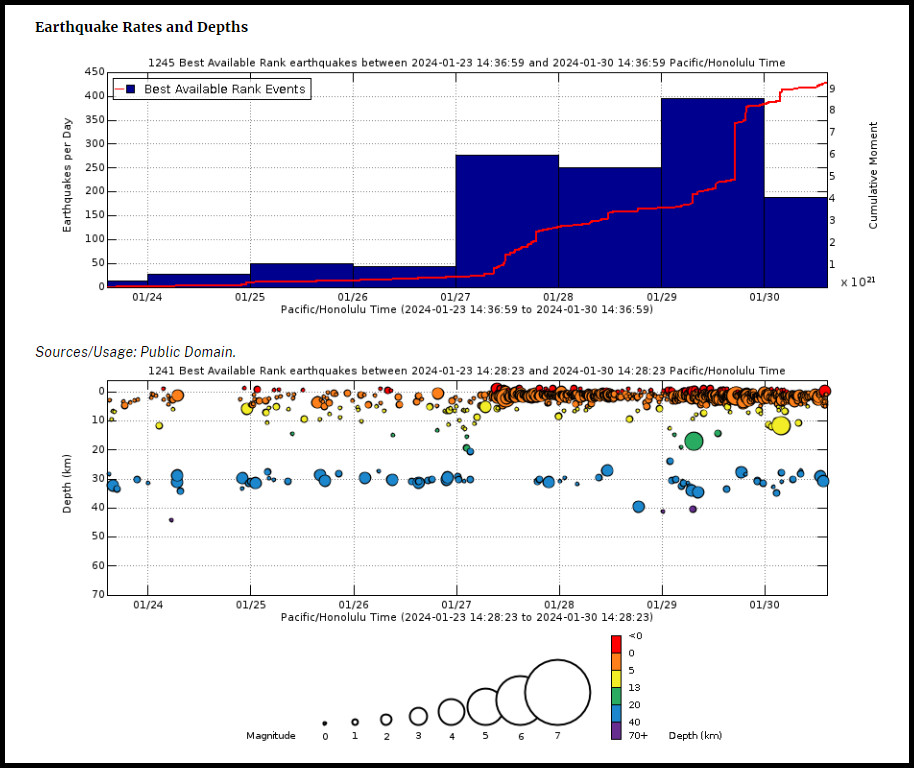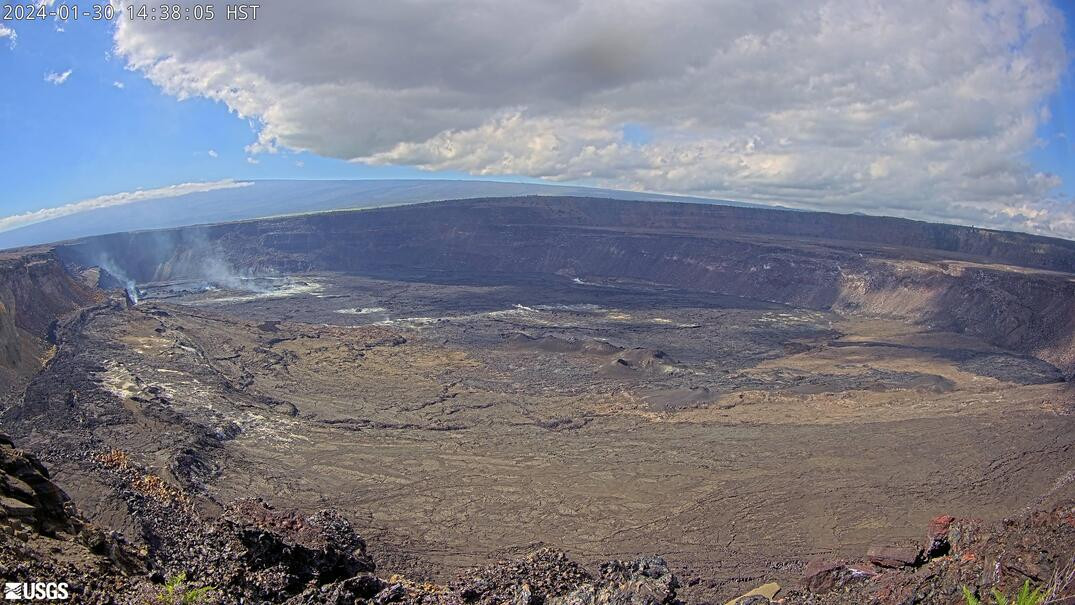(BIVN) – Kīlauea volcano is not erupting, and the alert level remains at ADVISORY, as the recent increase in seismicity in the south caldera region continued on Tuesday.
Scientists say the earthquakes are “becoming somewhat more widespread”, but have not increased in frequency.
“Kīlauea summit remains pressurized,” wrote the USGS Hawaiian Volcano Observatory. “In recent months unrest has escalated quickly, and an eruption could occur in the future with little warning.”

(From the USGS HVO) Above Top: Number of earthquakes per day during the past week (blue bars). The red line is the cumulative moment (energy) release. Bottom: Depth of earthquakes during the past week in the area shown on the map above. Depth is reported relative to sea level, which is equal to a depth of zero on the above plot. On both figures, circle-size represents magnitude, and color indicates depth.
As of Tuesday, there were no new closures reported within Hawaiʻi Volcanoes National Park due to the uptick in seismicity.
From the USGS Hawaiian Volcano Observatory on Tuesday:
South caldera seismicity continued through yesterday, becoming somewhat more widespread, but not increasing in event frequency. In general, rates have been fairly steady since Saturday morning. Periods of increased seismicity can be expected to continue during repressurization of the summit magma reservoir, which has been ongoing since the end of the September 2023 eruption.
Kīlauea’s summit region remains at a high level of inflation. Tiltmeters near Sand Hill and Uēkahuna bluff indicate ongoing inflationary tilt localized to the south caldera area, with a steady rate. Step-wise changes in the tilt signal over the past day were due to the instrument being shaken by nearby earthquakes.
Sulfur dioxide (SO2) gas emission rates remain low. Field measurements indicated an SO2 emission rate of approximately 70 tonnes per day on January 17, which was similar to measurements in October, November, and early December.
Scientists also noted that seismicity in Kīlauea’s East Rift Zone and Southwest Rift Zone remained low in the past 24 hours.


by Big Island Video News5:07 pm
on at
STORY SUMMARY
HAWAIʻI VOLCANOES NATIONAL PARK - The recent increase in seismicity continued Tuesday, with earthquakes becoming somewhat more widespread around the Kīlauea summit region.